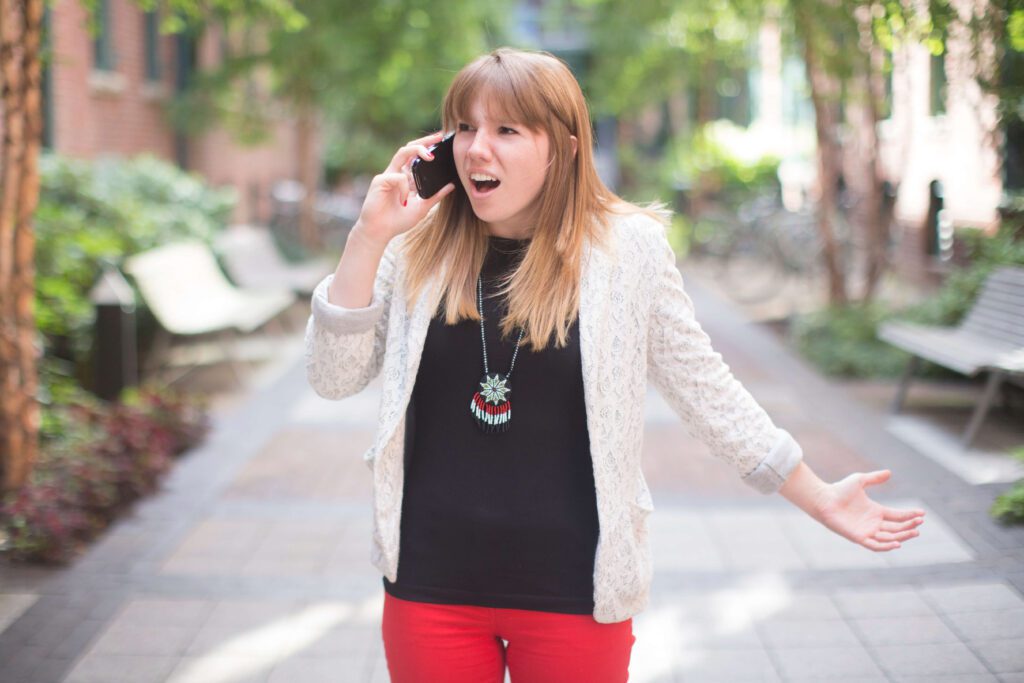For those who don’t know it, when I’m not training on communication, customer service, and working relationships, I foster animals for my local animal control facility.
Right now, I’m fostering a mother Chihuahua and her four puppies, who turned 6-weeks old this week. They’ve just gotten to the age where they’re really a lot of fun and I enjoy taking them outside and watching them explore the world. However, sometimes, one will hold back a bit, unsure of what that STRANGE object is, or whether climbing down the steps is something that can actually be done.
 The puppies’ fear and desire to play it safe reminded me that many people do the same thing in their relationships; both personal and professional. They’re afraid to communicate their thoughts, ideas, and needs because they’re afraid of others’ reactions. However, what they don’t realize is that nothing gets better, relationships don’t improve, and people don’t respect those who don’t communicate.
The puppies’ fear and desire to play it safe reminded me that many people do the same thing in their relationships; both personal and professional. They’re afraid to communicate their thoughts, ideas, and needs because they’re afraid of others’ reactions. However, what they don’t realize is that nothing gets better, relationships don’t improve, and people don’t respect those who don’t communicate.
Whether it’s at work or in your personal relationships, you’ve got to stop playing it safe and start taking some communication risks if you want to build strong relationships with those around you.
Here are some risks you should consider.
Risk uncomfortable conversations
Relationships are built on trust and trust is built on communication. If you can’t be honest with those around you, you’ll never have successful working or personal relationships. If your coworker’s work habits impact your ability to do your job, or you’re not getting the support you need from your spouse, you have to let them know. When you don’t, you suffer, the other person suffers, and your relationship suffers. To be successful, you have to take the risk to confront others appropriately, not via email, but actually sitting down with someone one-on-one and talk about issues that need to be addressed. If you don’t know how, take a communication course or ask the advice of a mentor. If all else fails, start the conversation by saying, “I’m not really sure how to say this the right way, but there’s something I need to talk with you about that’s been bothering me . . .”
On the flip side of this issue, you also need to risk listening and participating in an uncomfortable conversation when someone brings their concerns to you!
 Risk looking foolish
Risk looking foolish
Too many people don’t share their ideas and concerns because they’re afraid of looking stupid or foolish. It’s interesting that many people feel that about themselves, but are understanding when others do so and are relieved when someone else states a concern they also have or asks a question they wanted to ask. Push past the fear of looking foolish and share your ideas and concerns. Sometimes you might fall on your face, but even when you do, you can learn something from the experience.
Risk self-disclosure
Self-disclosure is intentionally revealing personal information to another person. Of course, we should use good sense when revealing personal information at work, and for MANY people, they should be more selective about what they reveal on social media. That being said, for relationships to be established and to grow, there must be self disclosure. You’ll also find, that as you disclose, others will feel more safe and comfortable to disclose to you, thus strengthening your relationship.
Risk rejection
Too many people avoid asking for something in a relationship because they fear rejection. “If I ask my coworker to cover for me over the lunch hour, he’ll say no.” “If I ask my sister to take mom to the doctor for me, she’ll say she’s busy and won’t help.” However, by not asking for what you need in a relationship, the answer is automatically NO, so why not take the risk to ask? At least if you do, you have a 50/50 chance of a YES.
Risk saying NO
The people who don’t ask for things because they fear rejection, are often the same people who can’t say no to anything because they don’t want others to think they’re bad people or not “team players.” However, every healthy relationship requires boundaries. The only way others know what our boundaries are is if we tell them and say “no” when someone asks us to step outside them. For example, if a coworker asks you to cover for him over the lunch hour, and you’ve done that for three weeks in a row, or he always asks you and never asks other coworkers, it might be time to risk saying, “I can’t cover for you today Mark, I have a commitment during the lunch hour.” It may be uncomfortable to tell others no, but when saying no is the right thing for you, the other person, or your relationship, it’s something that needs to be said. (Click here for more help in learning HOW to say no. )
 Taking these communication risks in your work and personal relationships may not be easy at first, but you’ll find when you take a leap of faith to overcome your fear, not only is it incredibly freeing, but your relationships will grow stronger as a result.
Taking these communication risks in your work and personal relationships may not be easy at first, but you’ll find when you take a leap of faith to overcome your fear, not only is it incredibly freeing, but your relationships will grow stronger as a result.
What communication risks are you going to take in your relationships this week? Comment and let me know!
Amy Castro is a workplace communication expert, speaker, trainer, and writer of The Performance Communication Blog. She also authored the book, Practical Communication- 25 Tips, Tools, and Techniques for Getting Along and Getting Things Done.







